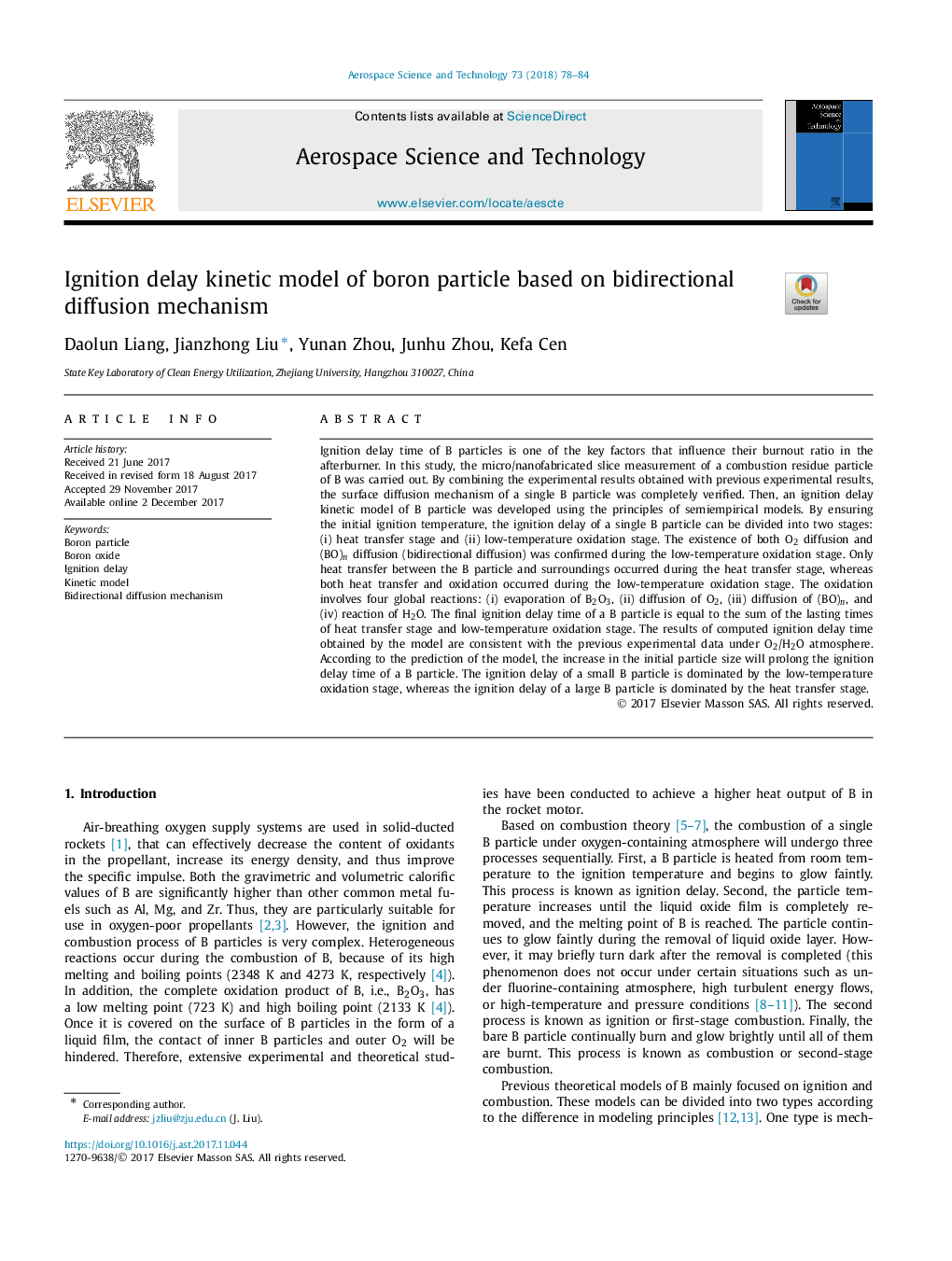| Article ID | Journal | Published Year | Pages | File Type |
|---|---|---|---|---|
| 8058092 | Aerospace Science and Technology | 2018 | 7 Pages |
Abstract
Ignition delay time of B particles is one of the key factors that influence their burnout ratio in the afterburner. In this study, the micro/nanofabricated slice measurement of a combustion residue particle of B was carried out. By combining the experimental results obtained with previous experimental results, the surface diffusion mechanism of a single B particle was completely verified. Then, an ignition delay kinetic model of B particle was developed using the principles of semiempirical models. By ensuring the initial ignition temperature, the ignition delay of a single B particle can be divided into two stages: (i) heat transfer stage and (ii) low-temperature oxidation stage. The existence of both O2 diffusion and (BO)n diffusion (bidirectional diffusion) was confirmed during the low-temperature oxidation stage. Only heat transfer between the B particle and surroundings occurred during the heat transfer stage, whereas both heat transfer and oxidation occurred during the low-temperature oxidation stage. The oxidation involves four global reactions: (i) evaporation of B2O3, (ii) diffusion of O2, (iii) diffusion of (BO)n, and (iv) reaction of H2O. The final ignition delay time of a B particle is equal to the sum of the lasting times of heat transfer stage and low-temperature oxidation stage. The results of computed ignition delay time obtained by the model are consistent with the previous experimental data under O2/H2O atmosphere. According to the prediction of the model, the increase in the initial particle size will prolong the ignition delay time of a B particle. The ignition delay of a small B particle is dominated by the low-temperature oxidation stage, whereas the ignition delay of a large B particle is dominated by the heat transfer stage.
Related Topics
Physical Sciences and Engineering
Engineering
Aerospace Engineering
Authors
Daolun Liang, Jianzhong Liu, Yunan Zhou, Junhu Zhou, Kefa Cen,
